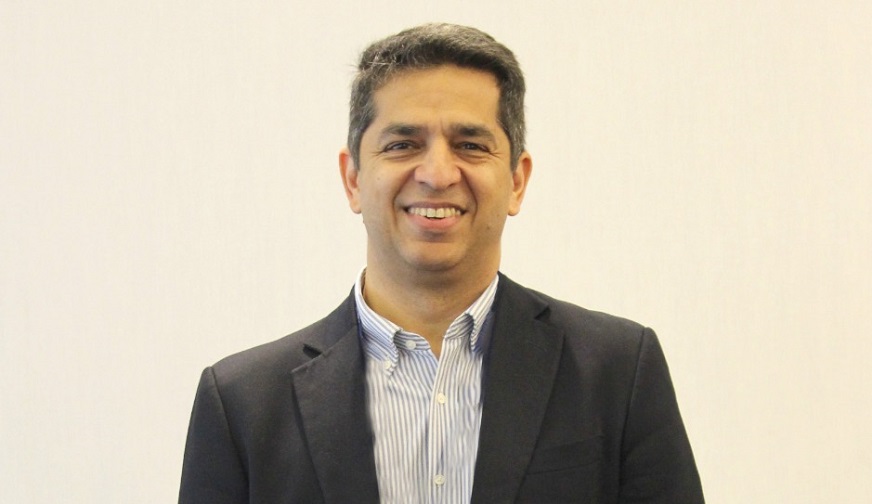Vaibhav Magow, VP, International Division, Hughes Network System speaks with Teletimes
Vaibhav Magow, Vice President at Hughes Network Systems, LLC (HUGHES), leads the company’s broadband systems sales effort in the Asia Pacific, Middle East/Africa,Europe and Russia/CIS regions. Magow works closely with satellite operators, mobile network operators, and national and local government agencies to tailor andimplement high performing and efficient satellite solutions to help connect the unconnected and enable enterprise digital transformations.
A satellite communications and IT professional with more than 25 years of experience, Magow has held positions of increasing responsibility in sales, product development, marketing and program management over the course of his career. Prior to joining Hughes in his regional role, Magow focused on the Indian satellite market at Hughes Communications India, Ltd. (Hughes India).
Magow obtained a Bachelor of Engineering degree in Computer Science from the University of Pune in Pune, Maharashtra, India. He speaks frequently at regional industry conferences and panels.
Consumers, businesses, governments and communities around the world benefit from the connected experiences enabled by Hughes technologies and services.
Below are the excerpts from an exclusive interview with Vaibhav Magow during CABSAT 2023 in Dubai.
Khalid Athar: Please give us some details about the new 28 satellite Lyra constellation operating in LEO?
Vaibhav Magow: Earlier this year, EchoStar, the parent company of Hughes, announced that we are building a new Low Earth Orbit constellation to be called, EchoStar Lyra™. The global S-band mobile satellite service (MSS) network will comprise 28 satellites, currently under construction. The constellation will begin delivering Internet of Things, Machine to Machine and other data services beginning in 2024. The system will power smart, two-way device connectivity, with support for 5G non-terrestrial network (NTN) and LoRa® protocols.
KA: Can you give us more details about the use cases? Especially the IoT connectivity leveraging non-terrestrial 5G.
VM: Designed to interoperate with our existing S-band GEO satellite over Europe, EchoStar 21, the Lyra constellation will expand our global IoT capabilities with a ‘store and forward’ type service that can be used for asynchronous device monitoring for applications such as water and soil conditions for agriculture, meter readings for utilities and location-tracking for fleets and cargo.
KA: What are some of the latest trends in the LEO environment? What is currently driving the demand?
VM: In the LEO broadband space, we’re at an exciting moment as the OneWeb constellation comes fully online! There is interest from every market we serve – from mobile network operators interested in using LEO service for backhaul to enterprises looking for a low-latency option to connect remote and rural sites into their managed networks to airlines eager to tap into the advantages of LEO for in-flight connectivity worldwide.
KA: What gives Hughes managed LEO satellites their competitive edge?
VM: I’m glad you asked that because we really do have a unique and compelling proposition for the market with our managed LEO offerings. As a managed services provider as well as the ground system engineering partner to OneWeb, an investor in the system and the manufacturer of the core module used inside every user terminal for the system, Hughes is the “one-stop for OneWeb service!” Unlike some other LEO systems, the OneWeb capacity is 100% dedicated to enterprise services – so customers don’t have to compete with consumer video-streaming traffic. Our offering comes with guaranteed service level agreements, help desk support and 24×7 network monitoring, just like all our managed networks. Combined with our electronically steerable antenna designed exclusively for the OneWeb system, Hughes Managed LEO gives enterprise customers a vertically integrated and engineered solution for global, low-latency networking.
KA: Please tell us about your advancements in the ground system technology?
VM: We continue to advance our JUPITER™ System ground platform. It’s already the most widely used VSAT system in the world, operating on over 75 satellites, and we continue to enhance its power as well as its capabilities. For instance, our latest JUPITER System Series 3 terminals, which we engineered to realize the leading-edge capabilities of our newest JUPITER 3 ultra high density satellite, provide even higher throughputs than earlier versions and are backward compatible with other JUPITER systems. As for our expanding capabilities, we now offer a multi-transport terminal (model number HT2110) that combines GEO and LTE transports with our proprietary ActiveTechnologies™ software to enable a seamless, hybrid connected experience. This is the technology we use in our own HughesNet® Fusion plans in the U.S. market, bringing consumers a blended (“fused,” if you will) GEO-wireless solution that yields a more responsive satellite internet experience than using GEO alone.
KA: Do you have any major upcoming announcements or milestones for 2023?
VM: We are eagerly anticipating the launch of our JUPITER 3 satellite later this year. With 500 Gbps of capacity, the satellite will bring much needed connectivity across the Americas. We will be sure to share that and other news with you in the coming weeks and months.












